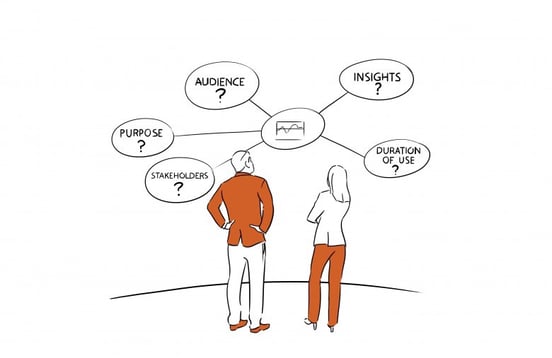
Experience mapping is a process that aims to visualize a holistic account of your customer’s experience including processes, decisions, and emotions that people feel while interacting with your product or service. It helps companies develop a deep understanding of the people they serve and to put that understanding at the core of their strategic planning.
When designing for experiences, we at Stratos believe that it’s best to design withyour customers — not just for them. That involves extra effort but comes with great payoffs. Over the course of time, we have seen that asking a few key questions and addressing them at the beginning of the process will not only impact the overall success of your mapping project, it will also save time and resources.
Here are a few important questions to consider before you start your experience mapping project:
1. What is the overall purpose of your mapping project?
Defining the purpose of the mapping process (and ultimately, the resulting map artifact) is key to determining the steps you will take to create your map. For example, is the purpose to build empathy within your organization for your users/ customers? Is it to inform the business team about the insights (needs and desires) gleaned from a recent study? Is it to inspire ideas for improvements to the experience? Is it to envision a new product or service experience that doesn’t exist yet? The mapping process can take a different direction depending on the purpose you decide. You need to have this question answered before creating a development plan for the project. For example, if the main purpose is to build empathy, current state experience maps like “day-in the-life” user journey maps can be very effective. However, if the goal is to inspire future solutions that the company can offer, you may want to explore ideal experience journey maps that include desired customer interactions with the company at each touchpoint.
(Look for future Stratos posts about different types of experience maps and their uses for achieving different types of goals.)
2. How will the map be used today? How will it be used in the future?
Defining ways the map will be used is critical for your project’s success. Sometimes it may be more of a team-building and vision-setting tool that you use in workshops, or it could be a stand alone communication piece to be sent throughout the entire organization. If it is the former, the process of making it will be the emphasis and the final presentation will not be as critical. If it will be used for organizational change and sent out via email or printed as a physical poster (for a hallway or a meeting room), then it will be important to have it professionally designed.
The use context will also determine the elements you will need to include in the map. If it is going to be used as a strategy building tool in a workshop where someone from your team will be facilitating or presenting the contents, you don’t have to include as many details. However if it will be used as a stand-alone poster down the road, the viewer would need the content to tell the full story and leave very little room for interpretation. You may even decide that the map will be a living document which gets continually updated over time as your product or service gets developed. This will influence the application and format you use.
3. Where are the insights going to come from?
Your map is only as good as the insights it embodies! The information you use for mapping the experience can come from different sources (previous qualitative research projects, current stakeholder understanding, big data, quantitative research, etc.). If the information you use is based on the current, collective understanding of the internal stakeholders then you are taking an inside-out “hypothesis” approach to build the map. If the map is driven by customer insights, you are taking an outside-in “empathy” approach.
It is better to get the insights from the customer’s point of view, so consider setting aside time for gathering research insights if you don’t have the information before setting up the project timeline. At Stratos, we facilitate a process that uses both inside-out and outside-in approaches. We bring customers in to work alongside the business team to identify needs and generate ideas on the spot.
4. Which stakeholders will be taking part in the mapping process?
If you want the map to be well rounded you need to have the right cross-section of stakeholder experts working on it (if the customer is a stakeholder, then they are experts of their own experiences). If you can’t get the right stakeholders involved, then there may be holes in the information.
If the mapping project is focused on envisioning a future experience, then invite people who can generate possibilities. At this stage, you will need a lot of blue-sky-thinking. Some people are implementers by nature and may have a hard time turning off their internal “we can’t do that” warning system. While pragmatism is a valuable part of design, experience mapping is a group effort. Choosing team-players who can embrace untested ideas and give constructive feedback is essential for a productive process.
5. Who will be using the map once it gets developed into an artifact?
Anticipating and knowing who will use the map as an artifact will help you decide the details that will best help them understand the story and its core message. Will it be for the organization to use internally or will external stakeholders see it as well? If you are building the map through a workshop process, make sure to invite at least a subset of your primary users to participate. If it is used by an innovation team to get buy in from senior leaders it may work differently than if it is used by your design team members. Determining the primary and the secondary users of the map early on will help you make the right content and design decisions.
Co-authored by: Monica Weiler & Anthony Weiler
Want to know more? Stratos Innovation Group has helped companies with the experience mapping process. Contact our Director, Monica Weiler, at monica@TheStratosGroup.com for more information and visit us at www.thestratosgroup.com.


